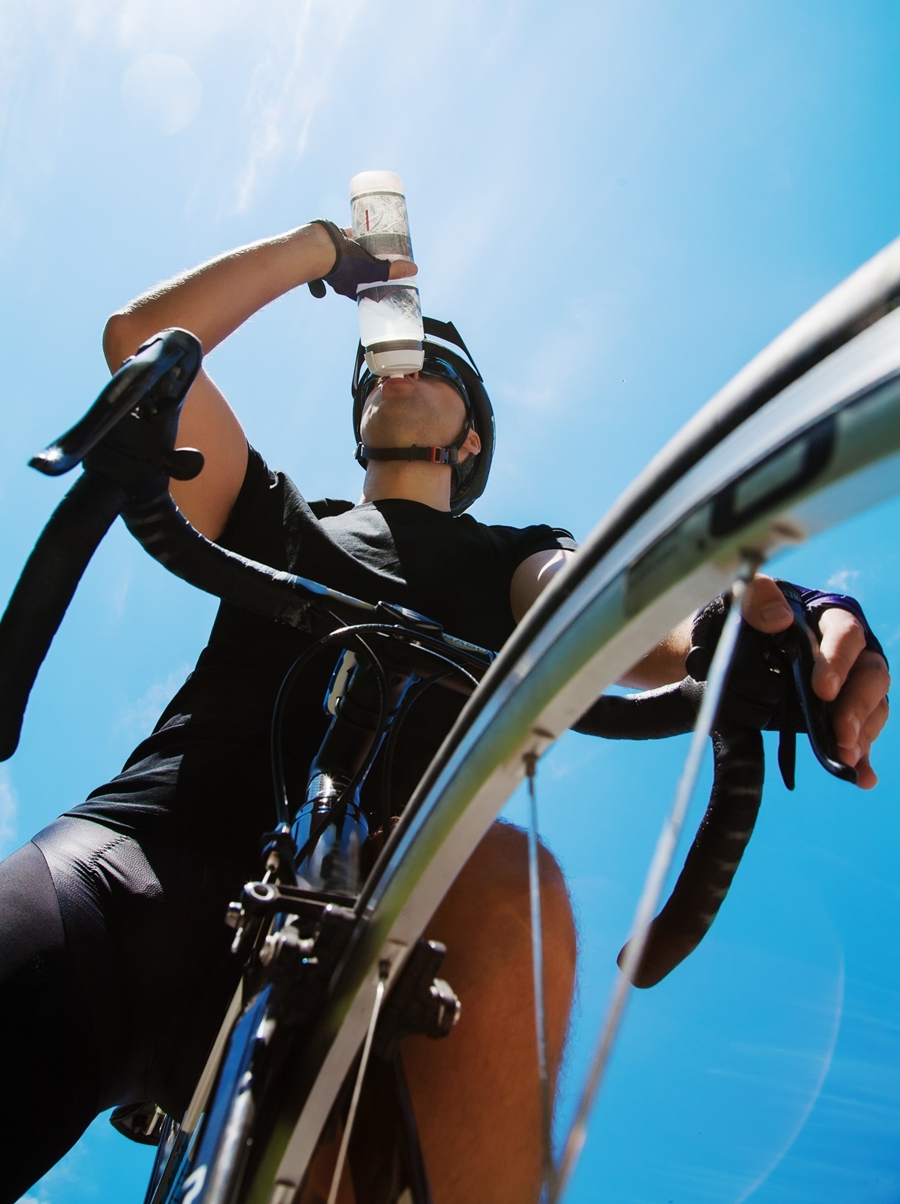U of A Team Co-Authors Paper Comparing Two Hydration Methods
FAYETTEVILLE, Ark. – Which is most effective for enhancing athletic performance while cycling? Drinking whenever you want or drinking only the amount needed to replace the fluid you lose while exercising?
That was the question studied by Stavros Kavouras, University of Arkansas associate professor of exercise science, and J.D. Adams, one of his doctoral students. Kavouras conducts research into issues related to hydration and directs the Hydration Science Lab at the U of A. On this study, he also worked with former colleagues at Harokopio University in Greece, the University of Athens and Rutgers University.
The research team published “Prescribed Drinking Leads to Better Cycling Performance than Ad Libitum Drinking” in the journal Medicine & Science in Sports & Exercise. Ad libitum is a Latin word for “at one’s pleasure,” which in the study meant the cyclists could drink as much water as they wanted, when they wanted.
Research has shown that dehydration can reduce exercise capacity and increase strain on the body as it works to regulate temperature, but many questions remain about how best to maintain optimal hydration. No previous study has examined the effectiveness of prescribed versus ad libitum drinking on cycling performance in the heat, according to the article.
After the researchers performed tests on 10 heat-acclimatized male cyclists, their results suggested that prescribed drinking to match fluid losses during exercise in the heat provided a performance advantage in cycling because of lower thermoregulatory strain and greater sweating responses.
“For optimal performance in the heat, athletes should develop their personalized hydration protocol to fully replace their fluid losses,” Kavouras said. “Even a small degree of dehydration had detrimental effect on performance. Drink on a schedule!”
He described how to measure fluid losses during exercise: measure your weight, with minimal or no clothing, before and after a one-hour practice session. The weight lost plus the amount of fluid ingested during the one-hour window equals water loss.
“For example, if you ingested 11 ounces of water or sport drink during a one-hour ride and yet afterward your scales showed you still lost a pound of weight, or 16 ounces, then you really had a water loss of those two combined, or 27 ounces,” Kavouras said. “In this case, to fully replace fluid losses during exercise, you should be drinking close to 27 ounces per hour. Remember that, based on the intensity and the environmental conditions, fluid losses will differ. Measure your losses in different weather and different intensities to get a better idea. If you notice that you are gaining weight during exercise, you are drinking more than you need. In that case, drink less.”
The cyclists first completed a familiarization session to allow researchers to estimate their individual sweating rate. Next, the cyclists completed two trials, one during which they drank as much water as they wanted and the other in which they drank water at a rate to match 100 percent of the fluid they lost while sweating. After the trials, researchers recorded their body weight, performance by speed, sweat rate, blood pressure, heart rate, lactic acid levels, thirst, gastrointestinal comfort and perceived exertion rate.
Further research would be needed to evaluate whether the same would be similar in other sports of varying intensities and environments.
About the University of Arkansas: The University of Arkansas provides an internationally competitive education for undergraduate and graduate students in more than 200 academic programs. The university contributes new knowledge, economic development, basic and applied research, and creative activity while also providing service to academic and professional disciplines. The Carnegie Foundation classifies the University of Arkansas among only 2 percent of universities in America that have the highest level of research activity. U.S. News & World Report ranks the University of Arkansas among its top American public research universities. Founded in 1871, the University of Arkansas comprises 10 colleges and schools and maintains a low student-to-faculty ratio that promotes personal attention and close mentoring.
Contacts
Stavros Kavouras, associate professor of exercise science
College of Education and Health Professions
479-575-5309, kavouras@uark.edu
Heidi Wells, director of communications
College of Education and Health Professions
479-575-3138, heidisw@uark.edu
